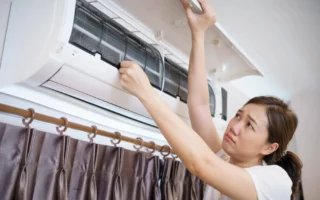Removing dried paint from vinyl plank flooring may seem daunting, but it can be a manageable task with the right approach and tools. The type of paint is crucial since different formulations react differently to solvents and removal techniques. By preparing your materials and following a clear step-by-step guide, you can restore your floors to their original beauty.
Preventing future stains is equally important. Simple precautions like dropping clothes or painting tape can save you time and effort later. If traditional methods don’t work for stubborn spots, consider alternative solutions that better suit your situation.
Understanding the type of paint on your vinyl plank flooring

Before tackling dried paint, it’s important to identify the type of paint involved. There are primarily two categories: water-based and oil-based paints.
Water-based paints are easier to clean up. They typically dissolve in water and can be removed with soap and warmth. If your stain is from this type, you may have a smoother time addressing it.
Oil-based paints, on the other hand, require more effort. They bond tightly to surfaces and usually demand specific solvents or chemicals for removal. Knowing what you’re dealing with helps determine your strategy.
Consider if the paint has fully cured or just dried out. Cured paint becomes harder to remove than recently spilled paint that hasn’t yet been set completely. This knowledge will save you time and frustration during the cleanup process as you choose appropriate methods and materials for effective removal.
Preparing the necessary materials for removal
Before diving into the removal process, gather your materials. By doing so, we ensure that the process runs smoothly and efficiently.
Start with a plastic scraper or putty knife. These tools are gentle on vinyl surfaces yet effectively lift dried paint without causing scratches.
Next, you’ll need some rubbing alcohol or acetone. Both are excellent solvents for breaking down stubborn paint particles. Just remember to test a small area first to avoid any damage.
A soft cloth is also essential for applying the solvent and wiping away residues as you go along. Choose something absorbent but non-abrasive.
Have warm, soapy water ready for cleaning up afterward. A bucket will help keep things organized during your project while providing easy access to rinse any leftover cleaner from the floor’s surface after removing that pesky paint stain.
Step-by-step guide to removing dried paint from vinyl plank flooring

Start by gathering your materials. You’ll need a plastic scraper, warm water, dish soap, and a soft cloth. Optionally, you might want some rubbing alcohol or paint thinner for stubborn spots.
Dampen the cloth with soapy water and place it over the dried paint. Let it sit for about 10 minutes to soften the paint.
Next, use your plastic scraper to gently scrape at the edges of the paint, being careful not to scratch the vinyl surface beneath.
If residue remains, dab a small amount of rubbing alcohol or paint thinner on a clean cloth onto the area. Test in an inconspicuous spot first to ensure no damage occurs.
Preventing future paint stains on vinyl plank flooring
Prevention is key to keeping your vinyl plank flooring pristine. Start by covering the floor with drop cloths or plastic sheets while painting. These barriers will catch any splatters.
Using painter’s tape along edges and corners creates clean lines and minimizes spills. This extra precaution can save you time when cleaning later.
If you’re planning a big project, move furniture away from painted areas. More space reduces the likelihood of accidents.
Investing in high-quality paint that adheres well can also help prevent unwanted stains on your flooring. Always opt for paints specifically designed for easy cleanup.
Alternative methods for removing dried paint
If traditional methods don’t work, there are other ways to tackle dried paint on vinyl plank flooring. One option is using a commercial solvent designed for removing paint. Make sure it’s safe for vinyl before applying it.
Another effective alternative is vinegar mixed with water. This natural solution can help break down the paint’s bond without harming your floor. Just apply it with a cloth and gently rub until you see results.
For stubborn spots, try rubbing alcohol or acetone, but use these sparingly as they may affect your flooring finish. In order to avoid damage, it is always a good idea to test in an inconspicuous area first.
Use a plastic scraper for larger patches of dried paint. It lets you chip away at the bulk without scratching your beautiful planks too much.




